Text
How to write about Grief:
There is no right or wrong way to experience grief. Just as there is no right or wrong way to write it. Everyone is different, each set of circumstances are different.
The point of this post is to show you how different people react in different ways, and give points on how you might write that, depending on your character and story.
Reactions to Grief
Numbness: Your character may go into auto-pilot and be unable to process the events that have unfolded.
Anger: This can be aimed at other people, at a Higher Being, or at nothing in particular.
Unsteady: Your characters may be unsteady. For example, unable to stop their voice from shaking or they may find it difficult to stand.
Focusing on Others: Your character may disregard their own feelings because they are so overwhelmed and instead concentrate on someone else’s well-being.
Seek out routines: Amid upheavals, your character may seek comfort in tasks that are familiar and “safe,” such as working, cleaning, making their bed, making absurd amounts of tea or taking a morning walk.
Pretending that Everything Is Okay: Grief is viewed as an emotion that should cease or be concealed once the funeral is over. So people mention the news in an offhand comment, then talk and laugh as if all is right with the world.
Denial: Some people deny the reality of death and convince themselves that the news is a joke or can’t be true.
Reactions from people surrounding your character:
People may avoid your character as they do not know what to say or simply can’t find the right words.
Some may even go as far as to cross the street when they notice your character approaching.
Even people that the character has known for years may act strange or standoff-ish, simply because they don’t know what to say.
On the other side of that, some people may be overly helpful and friendly.
It is not uncommon for estranged friends, family or others to suddenly reappear in a person’s life after they have experienced grief.
Either because those people want to offer their support and love or because they’re being nosy and they want to be kept up to date on the “drama”.
Most people will move on from the event fairly quickly if they weren’t emotionally invested.
Some people may even get annoyed at your character for still being upset weeks or months later.
When talking about the person they have lost:
Your character may recall a memory or tell a story about their loved one, these are possible reactions. (I have encountered all of them.)
Your character may being to cry or get upset at the thought of the person they have lost.
The person they are talking to may become awkward and avert eye contact when your character brings up the person they have lost.
Others may ask or tell your character to stop talking about the person they have lost. They may roll their eyes, cough awkwardly, or cut off your character mid sentences so that they can change the subject.
Some people may ask inappropriate questions about the circumstances in which the character’s loved one passed away. Depending on the personality of your character then may react differently.
Other things to note:
Grief is not constrained by time.
One of the main problems with grief in fiction is that a character is typically heartbroken for a couple scenes and then happy again. But grief does not evaporate because the world needs saving.
Allow your character to wrestle with their grief.
Your character may feel guilty. Your character may feel a twinge of guilt when they laugh or have a good time with someone else; when they do something to remind them that they’re alive, and their loved one isn’t.
Grief is a game changer. A previously outgoing character may withdraw and isolate themselves. Some people may take grief and/or bereavement as a sign that life is too short; they may make big decisions in an attempt to make themselves feel better and grow away from their pain.
Sometimes grief can help you find your purpose.
At first grief can be all consuming. It hurts and you can’t really control it. It may seem unrelenting. Eventually the grief will become easier to deal with, your character may find the days to be better, but that doesn’t mean that when the grief hits it doesn’t hurt any less.
For most people, grief never really goes away. “Sometimes you have to accept the fact that certain things will never go back to how they used to be.”
It is rare that a person will ever give a long speech about their feelings, a lot of people struggle to even find the words. But that’s okay. Show the reader how your character feels, rather than just telling them.
Don’t pause the plot to deal with the aspect of grief. This could overwhelm the readers and drag the pace down. In reality, life doesn’t just stop due to grief, the world keeps spinning and things still need to be done. Use the character’s grief as a backdrop for the story’s events.
Yes, grief affects the character’s day-to-day life, goals, and relationships. But it shouldn’t drive readers away or stagnate the story. Instead, should engage readers and produce empathy that keeps them turning pages.
You don’t need to tell your readers that everything will be fine. You don’t need to provide all of the answers.
“Skirting grief and treating it lightly is easy. But by realistically portraying it through a variety of responses and its lasting effects on the character’s life, readers will form a connection with your characters.“
26K notes
·
View notes
Text
random medical facts to use for your hospital whump writing. let your whumpee be a patient today!
if a patient has a seizure that lasts longer than 5 minutes, or if they suffer several seizures, they risk sustaining brain damage — because their brain can’t get oxygen during the seizure.
if a patient’s coughing up blood when they’re lying on their back, make sure to tune their face to the side so that they don’t choke on their own blood (the same applies to vomit too)
chest compression can and often leave patients with broken ribs. because you have to push down hard enough in order to help pump blood from the patient’s heart to their brain (the point is so that the brain gets blood, in order to prevent brain damage), and more often than not, you’ll end up breaking your patient’s ribs — that is normal and okay, because it’s better for your patient to have broken ribs than it is for them to lose their life.
after a course of electroconvulsive therapy, you’ll normally have to give your patient a dose of muscle relaxant, otherwise the aftermath of the shock may cause musculoskeletal complications.
you don't use a defibrillator to shock a patient if they already flat line, because their heart no longer has any electricity. quote "asystole isn't a shockable rhyme, and defibrillator may actually make it harder to restart the heart." (Cleveland Clinic)
the famous, classic "a character was knocked out and they stayed unconscious for hours before they woke up on their own with no lingering damage" trope is actually almost impossible if you want your work to be medically accurate (but if you don’t care about accuracy and are just here for the whump, that is totally fine!). if someone was knocked out and they stayed unconscious for more than several minutes, chances are that they suffer permanent brain damage, so they won't "wake up on their own in the next hour or two and be completely fine without intense medical attention".
4K notes
·
View notes
Photo
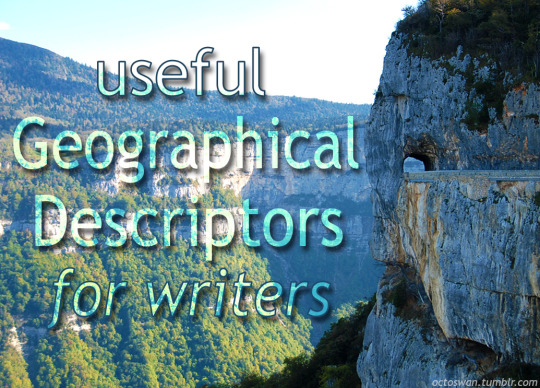
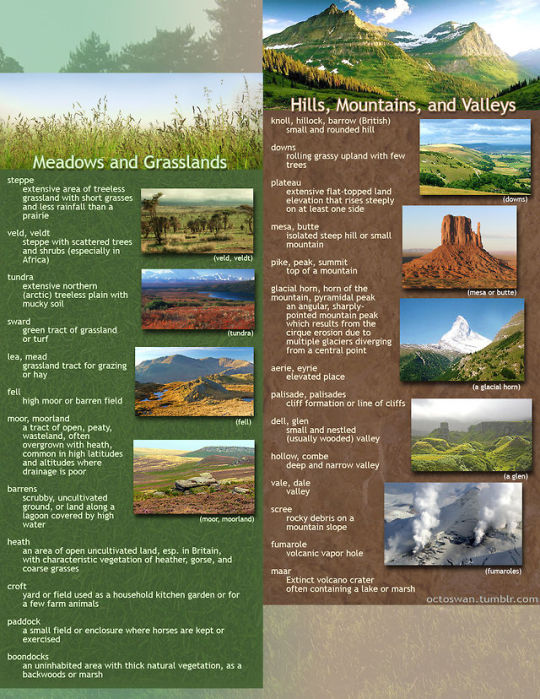

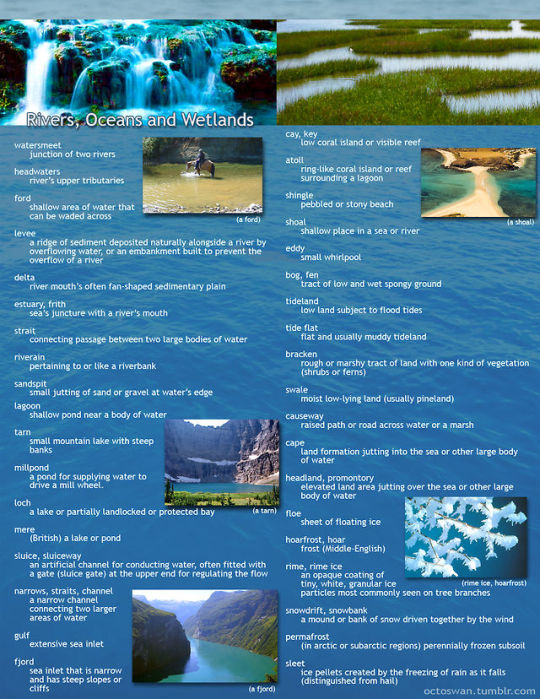

I made these as a way to compile all the geographical vocabulary that I thought was useful and interesting for writers. Some descriptors share categories, and some are simplified, but for the most part everything is in its proper place. Not all the words are as useable as others, and some might take tricky wording to pull off, but I hope these prove useful to all you writers out there!
(save the images to zoom in on the pics)
215K notes
·
View notes
Text
Irate householder attacks a street bard and gets killed: London; May 3, 1325. A minstrel named Thomas Somer decided to play some music on the street outside the house of Thomas Lynn. Lynn was so enraged that he chased Somer down the street with a door-bar and hit him until Somer finally stabbed him in the chest.
Meanwhile over in Oxford, the Northern and Southern Scholars were shooting each other with bows and arrows and apparently having gang fights in the streets.
Did you find an interesting one? Let me know, I love this stuff. Well, not murder obviously, but history

282 notes
·
View notes
Text

You think “oh it would be useful to learn how to identify my thrifted yarn and clothing” and before you know it you’ve been recruited by fiber witches giving out their spells willy nilly, again
18K notes
·
View notes
Text
Get yourself a fabric store that will light your fabric on fire for you
No but legit I asked what the fiber content of something was and the guy didn’t know so he cut a chunk off and lit it on fire and felt the ashes and was like. Yeah this is mostly cotton with a lil bit of silk. And that was the moment I knew. This is it. This is the fabric store for me. Also that guy is marriage material. Not for me but damn some person is gonna be so happy with him.
150K notes
·
View notes
Photo

How To: Play A Character High on Amphetamines
Afficher davantage
599 notes
·
View notes
Text
Resources For Writing Sketchy Topics
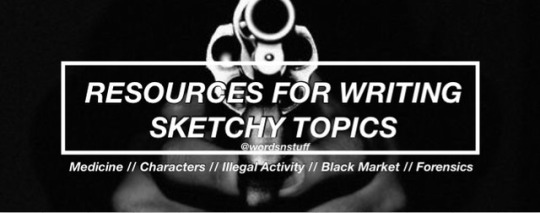
Medicine
A Study In Physical Injury
Comas
Medical Facts And Tips For Your Writing Needs
Broken Bones
Burns
Unconsciousness & Head Trauma
Blood Loss
Stab Wounds
Pain & Shock
All About Mechanical Injuries (Injuries Caused By Violence)
Writing Specific Characters
Portraying a kleptomaniac.
Playing a character with cancer.
How to portray a power driven character.
Playing the manipulative character.
Portraying a character with borderline personality disorder.
Playing a character with Orthorexia Nervosa.
Writing a character who lost someone important.
Playing the bullies.
Portraying the drug dealer.
Playing a rebellious character.
How to portray a sociopath.
How to write characters with PTSD.
Playing characters with memory loss.
Playing a pyromaniac.
How to write a mute character.
How to write a character with an OCD.
How to play a stoner.
Playing a character with an eating disorder.
Portraying a character who is anti-social.
Portraying a character who is depressed.
How to portray someone with dyslexia.
How to portray a character with bipolar disorder.
Portraying a character with severe depression.
How to play a serial killer.
Writing insane characters.
Playing a character under the influence of marijuana.
Tips on writing a drug addict.
How to write a character with HPD.
Writing a character with Nymphomania.
Writing a character with schizophrenia.
Writing a character with Dissociative Identity Disorder.
Writing a character with depression.
Writing a character who suffers from night terrors.
Writing a character with paranoid personality disorder.
How to play a victim of rape.
How to play a mentally ill/insane character.
Writing a character who self-harms.
Writing a character who is high on amphetamines.
How to play the stalker.
How to portray a character high on cocaine.
Playing a character with ADHD.
How to play a sexual assault victim.
Writing a compulsive gambler.
Playing a character who is faking a disorder.
Playing a prisoner.
Portraying an emotionally detached character.
How to play a character with social anxiety.
Portraying a character who is high.
Portraying characters who have secrets.
Portraying a recovering alcoholic.
Portraying a sex addict.
How to play someone creepy.
Portraying sexually/emotionally abused characters.
Playing a character under the influence of drugs.
Playing a character who struggles with Bulimia.
Illegal Activity
Examining Mob Mentality
How Street Gangs Work
Domestic Abuse
Torture
Assault
Murder
Terrorism
Internet Fraud
Cyberwarfare
Computer Viruses
Corporate Crime
Political Corruption
Drug Trafficking
Human Trafficking
Sex Trafficking
Illegal Immigration
Contemporary Slavery
Black Market Prices & Profits
AK-47 prices on the black market
Bribes
Computer Hackers and Online Fraud
Contract Killing
Exotic Animals
Fake Diplomas
Fake ID Cards, Passports and Other Identity Documents
Human Smuggling Fees
Human Traffickers Prices
Kidney and Organ Trafficking Prices
Prostitution Prices
Cocaine Prices
Ecstasy Pills Prices
Heroin Prices
Marijuana Prices
Meth Prices
Earnings From Illegal Jobs
Countries In Order Of Largest To Smallest Risk
Forensics
arson
Asphyxia
Blood Analysis
Book Review
Cause & Manner of Death
Chemistry/Physics
Computers/Cell Phones/Electronics
Cool & Odd-Mostly Odd
Corpse Identification
Corpse Location
Crime and Science Radio
crime lab
Crime Scene
Cults and Religions
DNA
Document Examination
Fingerprints/Patterned Evidence
Firearms Analysis
Forensic Anthropology
Forensic Art
Forensic Dentistry
Forensic History
Forensic Psychiatry
General Forensics
Guest Blogger
High Tech Forensics
Interesting Cases
Interesting Places
Interviews
Medical History
Medical Issues
Misc
Multiple Murderers
On This Day
Poisons & Drugs
Police Procedure
Q&A
serial killers
Space Program
Stupid Criminals
Theft
Time of Death
Toxicology
Trauma
295K notes
·
View notes
Text
i dont consider myself a 'fashion guru' by any means but one thing i will say is guys you dont need to know the specific brand an item you like is - you need to know what the item is called. very rarely does a brand matter, but knowing that pair of pants is called 'cargo' vs 'boot cut' or the names of dress styles is going to help you find clothes you like WAAAYYYY faster than brand shopping
179K notes
·
View notes
Text
that post about how Google Images results are now flooded with garbage AI, making it a horrible sewage trap for artists who just want to find useful reference photos, made me sad, but it also led me on a little walk down memory road that ended in a pleasant discovery. when I went to college, which was before Google Images existed, the art school nearby had an amazing archive of hard-copy reference images -- literally hundreds of thousands of physical images of people and objects and animals and places, collected from magazines, postcards, books, etc, that you could browse in and even borrow from. it was amazing.
and it turns out, much to my delight, that it still exists and is being actively maintained.
they are gathered in folders with titles such as: Advertising, Arms & Armor, Costume, Dentistry, Drag Queens, Explosions, Ghost Towns, Hopper, Maps, Mesopotamia, Microscopy, Seeds & Seedpods, Textures, and many more. The collection is continually updated with new images and all material circulates for a loan period of four weeks.
The Subject Files cover people, places, objects, design, fashion, buildings, nature, and concepts. Research a time period by looking at subjects that are subdivided chronologically, such as Automobiles, Costume, Family Life, Advertising, Furniture, Interiors, Houses, Street Scenes, and U.S. History. The collection covers many decades, from the 19th century to the present day, and contains many images that you won't find on the internet, and they all circulate!
23 notes
·
View notes
Text
Pssst for anyone interested
a dictionary of old west slang
9 notes
·
View notes
Text
So You Want To Make a Character..
I’ve got a few generators you can use.
Need some clothes?
Try Here Here or Here Definitely here Steam punk clothing Char Style preference Dress
Need an Appearance idea?
Humanoid generator? check Non-Humanoid? Got that too and this and maybe this Need Monsterpeople? I’ve got you. Maybe you need Cats?
Need some details and shit like that?
Bam Backgrounds and stuff? yep Personality. you need that shit Need something fandom related? World-building? location? got ya City generator hell yeah make your own god damn laws Oh shit someone died Landscape. CHAR DEVELOP QUESTION GEN Profile Thingy Have some dates Quirks
You thought I was done? Nope. Motha. Fuckin. Names.
So many fuckin names MOTHERLOAD OF NAMES
Plant Names Magic Book title
Just search ur ass up some names man
Items. Yeah. You heard me.
Medicine? got it Items out the ass more items wow
Other shit.
Wow Yep Plots More writing stuff This site has everything so fucking go for it Need AUs? How the shit did these two meet? Fanfic plots. you bet your ass. (tag me in the shit u write i wanna see what you get) What does it do thing (you come up with a better name for this one. fuckin fight me.
You bet your ass I will continue to update this. If you’ve got something I should add to this hmu. Now, go forth! Make characters and live yo life. UPDATE: Added more shit everywhere.
239K notes
·
View notes
Text
Hey! Are there blacksmiths in your story? I'm a hobbyist blacksmith and I'm here to help!
Blacksmithing is one of those things that a lot of people get wrong because they don't realize it stuck around past the advent of the assembly line. Here's a list of some common misconceptions I see and what to do instead!
Not all blacksmiths are gigantic terrifying muscly guys with beards and deep voices. I am 5'8, skinny as a twig, have the muscle mass of wet bread, and exist on Tumblr. Anybody who is strong enough to pick up a hammer and understands fire safety can be a blacksmith.
You can make more than just swords with blacksmithing. Though swords are undeniably practical, they're not the only things that can be made. I've made candle holders, wall hooks, kebab skewers, fire pokers, and more. Look up things other people have made, it's really amazing what can be done.
"Red-hot" is actually not that hot by blacksmith terms. when heated up, the metal goes from black, to red, to orange, to yellow, to white. (for temperature reference, I got a second degree burn from picking up a piece of metal on black heat) The ideal color to work with the metal is yellow. White is not ideal at all, because the metal starts sparking and gets all weird and lumpy when it cools. (At no point in this process does the metal get even close to melting. It gets soft enough to work with, but I have never once seen metal become a liquid.)
Blacksmithing takes fucking forever. Not even taking into account starting the forge, selecting and preparing metal, etc. etc. it takes me around an hour to make one (1) fancy skewer. The metals blacksmiths work with heat up and cool down incredibly fast. When the forge is going good, it only takes like 20 seconds to get your metal hot enough to work with, but it takes about the same time for it to cool down, sometimes even less.
As long as you are careful, it is actually stupidly easy to not get hurt while blacksmithing. When I picked up this hobby I was like "okay, cool! I'm gonna make stuff, and I'm gonna end up in the hospital at some point!" Thus far, the latter has yet to occur. I've been doing this for nearly a year. I have earned myself a new scar from the aforementioned second degree burn, and one singe mark on my jeans. I don't even wear gloves half the time. Literally just eye protection, common sense, and fast reflexes and you'll probably be fine. (Accidents still happen of course, but I have found adequate safety weirdly easy to achieve with this hobby)
A forge is not a fire. The forge is the thing blacksmiths put their metal in to heat it up. It starts as a small fire, usually with newspaper or something else that's relatively small and burns easily, which we then put in the forge itself, which is sort of a fireplace-esque thing (there's a lot of different types of forge, look into it and try to figure out what sort of forge would make the most sense for the context you're writing about) and we cover it with coal, which then catches fire and heats up. The forge gets really hot, and sometimes really bright. Sometimes when I stare at the forge for too long it's like staring into the sun. The forge is also not a waterfall of lava, Steven Universe. It doesn't work like that, Steven Universe.
Welding and blacksmithing are not the same thing. They often go hand-in-hand, but you cannot connected two pieces of metal with traditional blacksmithing alone. There is something called forge welding, where you heat your metal, sprinkle borax (or the in-universe equivalent) on it to prevent the metal from oxidizing/being non-weldable, and hammer the pieces together very quickly. Forge welding also sends sparks flying everywhere, and if you're working in a small space with other blacksmiths, you usually want to announce that you're welding before you do, so that everyone in a five-foot radius can get out of that five-foot radius. You also cannot just stuck some random pebbles into the forge and get a decent piece of metal that you can actually make something with, Steven Universe. It doesn't work like that, Steven Universe.
Anvils are really fucking heavy. Nothing else to add here.
Making jewelry is not a blacksmithing thing unless you want jewelry made of steel. And it will be very ugly if you try. Blacksmithing wasn't invented to make small things.
If there's anything here I didn't mention, just ask and I'll do my best to answer.
38K notes
·
View notes
Note
Is it okay if I reference the way you draw hands ?
You've always drawn them the absolute best after all >v>
That’s so kind of you to say! Sure that’s okay, we all have to learn somehow.
I also highly recommend this app called Handy!
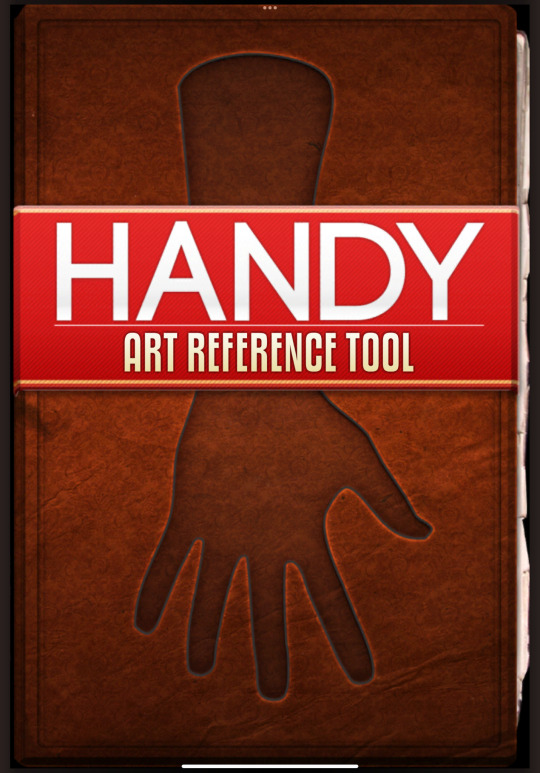
It’s so awesome! You can pick masc/fem hands, change the skin tone, choose from dozens of poses and best of all, ROTATE THE CAMERA AND CHANGE THE LIGHTING!
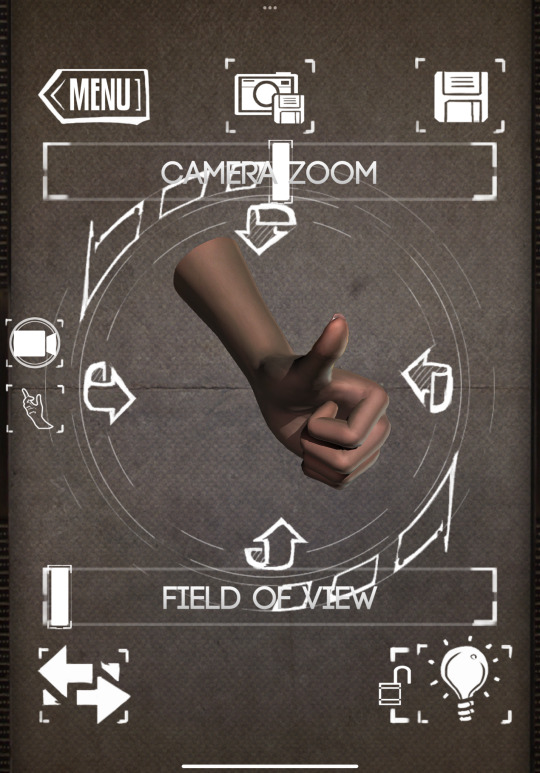
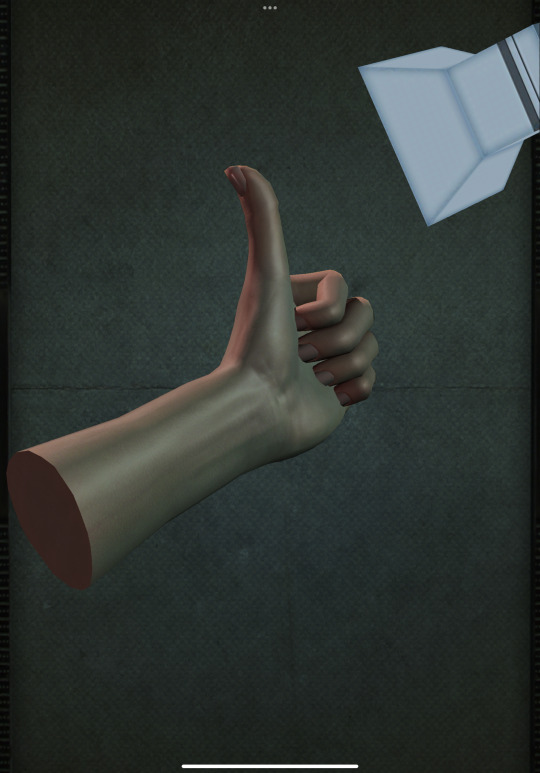
This has helped me on numerous occasions where I can’t find the right camera angle for the pose I’m going for, or I can’t capture my own reference photo very well.
The app also has feet and head models too :)
Good luck and practice, practice, practice!
633 notes
·
View notes
Text
The symbolism of flowers
Flowers have a long history of symbolism that you can incorporate into your writing to give subtext.
Symbolism varies between cultures and customs, and these particular examples come from Victorian Era Britain. You'll find examples of this symbolism in many well-known novels of the era!
Amaryllis: Pride
Black-eyed Susan: Justice
Bluebell: Humility
Calla Lily: Beauty
Pink Camellia: Longing
Carnations: Female love
Yellow Carnation: Rejection
Clematis: Mental beauty
Columbine: Foolishness
Cyclamen: Resignation
Daffodil: Unrivalled love
Daisy: Innocence, loyalty
Forget-me-not: True love
Gardenia: Secret love
Geranium: Folly, stupidity
Gladiolus: Integrity, strength
Hibiscus: Delicate beauty
Honeysuckle: Bonds of love
Blue Hyacinth: Constancy
Hydrangea: Frigid, heartless
Iris: Faith, trust, wisdom
White Jasmine: Amiability
Lavender: Distrust
Lilac: Joy of youth
White Lily: Purity
Orange Lily: Hatred
Tiger Lily: Wealth, pride
Lily-of-the-valley: Sweetness, humility
Lotus: Enlightenment, rebirth
Magnolia: Nobility
Marigold: Grief, jealousy
Morning Glory: Affection
Nasturtium: Patriotism, conquest
Pansy: Thoughtfulness
Peony: Bashfulness, shame
Poppy: Consolation
Red Rose: Love
Yellow Rose: Jealously, infidelity
Snapdragon: Deception, grace
Sunflower: Adoration
Sweet Willian: Gallantry
Red Tulip: Passion
Violet: Watchfulness, modesty
Yarrow: Everlasting love
Zinnia: Absent, affection
60K notes
·
View notes
Text
kind of a side thought from a couple of my posts about writing but I think it deserves its own post, so here goes:
when you’re writing a conflict between two characters or factions of characters, you need to consider whether their disagreement over the premise or over the methods. put another way: do they disagree on the problem or the solution?
this is a genuinely tricky thing to identify, especially in very complex narratives, so let’s do some very simple examples.
the situation: pacifist nation X is about to be invaded by empire Y. the laws and cultural practices of the Xians make violence and death so abhorrent that even accidental death is as minimized as possible. the Ylings, on the other hand, are totally cool with straight up murder and think diplomacy is for wimps, but are also pragmatic enough that they won’t waste troops if they don’t need to. the king of X calls in his council and asks for their opinions.
character A: It is more noble to die for one’s beliefs than to live having broken them. We should allow the Ylings to invade us and if we die, we die. character B: If all life is sacred, then our lives are also sacred. We must fight back against the Ylings, even though that means we’d be committing violence.
A and B agree on premise but not solution: they both acknowledge that the Yling invasion is a bad thing that will lead to their deaths if unopposed and that the nonviolence code is important; what they disagree on is priorities and methods.
character C: We should invite them into our nation as honored guests. Maybe they’ll spare us or at least kill us more mercifully. character D: We should propose an alliance and intentional annexation in exchange for our lives. Being part of the Yling Empire is a pretty sweet deal, actually.
C and D agree on solution but not premise: they’re both okay with just letting the empire walk in and invade, but C thinks the invasion would be a bad thing and is just trying to minimize the damage, and D thinks it would be a good thing and wants to maximize the rewards.
character E: We should fight the Ylings and stay a sovereign nation; the nonviolence code is stupid and holding us back. character D: We shouldn’t fight the Ylings and try to be peacefully part of their empire instead; we’d be true to our code and reap the rewards of an alliance.
E and F disagree on both premise and solution.
Now, all possible permutations of this argument are fine. “Is this the best way to solve the problem?” and “What actually is the problem?” are both great sources of conflict. Captain America: The Winter Soldier’s entire plot is an argument over the methods to prevent death and crime, but everyone agrees that crime is bad; one of Zuko’s big character development moments is when he realizes that the problem with the world isn’t the other nations ungratefully rejecting the prosperity and unity offered by the Fire Nation, but that the Fire Nation routinely commits genocide in their quest to colonize the rest of the world.
The issue is when a disagreement over methods is treated like a disagreement over premise. The characters are positioned like one side’s entire worldview is correct and the other is wrong, but it turns out they actually disagree with what the other does rather than what the other believes.
A big giveaway that what you’re seeing is about methods and not underlying beliefs? If at any point it is said or implied that one character “goes too far.” “Too far” implies a point before that cutoff that the other characters or the reader would be okay with. You can’t go too far if going any distance in that direction is wrong. “Frollo in the Disney version of The Hunchback of Notre Dame goes too far when he tries to kill all the Roma in the city” implies that the problem isn’t racism in general, but mass murder specifically, and that if Frollo was only nonviolently racist, that would be fine!
Like, you know the joke about the guy who offers a woman a million dollars to sleep with him, then ten dollars after she accepts the million dollar offer, and when she’s offended and says she’s “not that kind of woman,” he says, “Oh, we agreed you were that kind of woman, now we’re just haggling over price”? If your characters are arguing about the best way to solve a problem, they have already agreed about the existence and nature of the problem. Now they’re just haggling over price.
Again: that kind of storyline is okay if you actually do want to discuss extremism v. moderation of the same basic principle. It’s okay for two characters to argue over the best way to free all of their country’s slaves. It’s also okay for two characters to discuss the best way of practicing slavery, if you want to show how ingrained it is in society or how even the character you think is a moderate is still evil or something. What doesn’t work is if your intention is to say how awful slavery is, but then the entire conflict is over the treatment of slaves rather than whether slavery is okay.
tl;dr: setting up the conflict as one over premise and then having all the action be a fight over methods undermines your story; at best it’s just confusing, at worst it turns your characters into hypocrites.
2K notes
·
View notes
Text
hot artists don't gatekeep
I've been resource gathering for YEARS so now I am going to share my dragons hoard
Floorplanner. Design and furnish a house for you to use for having a consistent background in your comic or anything! Free, you need an account, easy to use, and you can save multiple houses.
Comparing Heights. Input the heights of characters to see what the different is between them. Great for keeping consistency. Free.
Magma. Draw online with friends in real time. Great for practice or hanging out. Free, paid plan available, account preferred.
Smithsonian Open Access. Loads of free images. Free.
SketchDaily. Lots of pose references, massive library, is set on a timer so you can practice quick figure drawing. Free.
SculptGL. A sculpting tool which I am yet to master, but you should be able to make whatever 3d object you like with it. free.
Pexels. Free stock images. And the search engine is actually pretty good at pulling up what you want.
Figurosity. Great pose references, diverse body types, lots of "how to draw" videos directly on the site, the models are 3d and you can rotate the angle, but you can't make custom poses or edit body proportions. Free, account option, paid plans available.
Line of Action. More drawing references, this one also has a focus on expressions, hands/feet, animals, landscapes. Free.
Animal Photo. You pose a 3d skull model and select an animal species, and they give you a bunch of photo references for that animal at that angle. Super handy. Free.
Height Weight Chart. You ever see an OC listed as having a certain weight but then they look Wildly different than the number suggests? Well here's a site to avoid that! It shows real people at different weights and heights to give you a better idea of what these abstract numbers all look like. Free to use.
313K notes
·
View notes